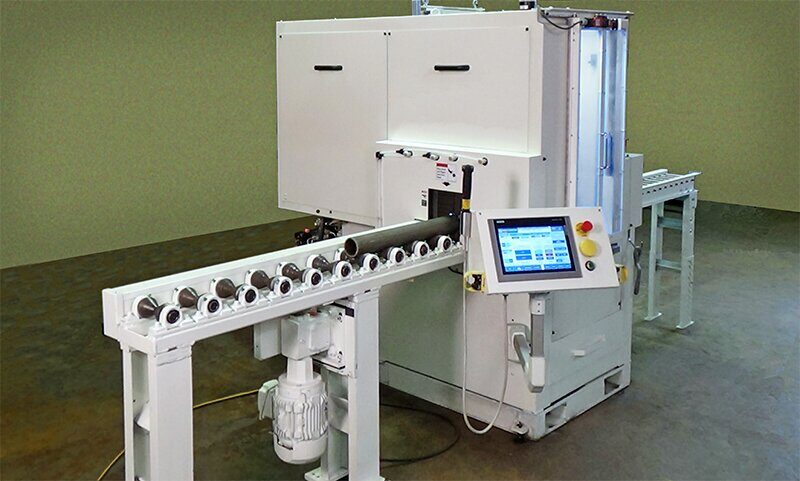Safety Specialists
At DMC, our team of experienced automation engineers specialize in Safety PLC programming, delivering robust and reliable solutions for machine safety and PLC safety applications. Whether you’re implementing a new safety PLC system or upgrading an existing one, we design flexible, scalable, and compliant solutions tailored to your industry’s needs.

Ready to start your next project?
Our expertise spans a variety of industries, from manufacturing and automotive to energy and pharmaceutical, ensuring your machines meet the highest safety standards while optimizing productivity. We work with leading Safety PLC platforms, integrating advanced safety functions such as emergency stop systems, safety-rated motion control, fail-safe communication, and redundant architectures.
Safety Standards
Safety PLCs perform the necessary fail-safe actions to meet stringent criteria defined in approved international safety standards such as IEC 61508, IEC 61511, ISO 13849, and IEC 62061. Our engineers specialize in programming Safety PLCs for critical systems, ensuring compliance with these global machine safety regulations. Whether you need a full safety system design or modifications to existing PLC safety programs, DMC delivers efficient and cost-effective solutions that enhance the reliability and safety of your automated systems while maintaining regulatory compliance.
Benefits of Working With DMC
Our team includes TÜV Certified Machinery Safety Experts (CMSE), qualified to assess risks across a wide range of machines. We determine the appropriate safety operating level and provide expert guidance on reducing risk as much as reasonably possible.

With extensive real-world experience, we offer safety consulting services designed to minimize risk while maintaining uptime and improving operator safety in your manufacturing environment. Our engineers have worked with diverse machines across various industries, ensuring effective and compliant safety solutions tailored to your needs.
Technologies We Work With
DMC has extensive expertise in implementing safety integrated solutions. We work with different platforms such as:
- Siemens – Safety Integrated and PROFIsafe protocol
- Allen-Bradley – GuardLogix and SmartGuard
- Beckhoff – TwinSAFE
- Pilz – Safety Relays and Controllers
- B&R – SafeDESIGNER and POWERLINK
- Phoenix Contact
- Schneider – Safety PLCs
- Omron
- Mitsubishi
Services We Provide
We program custom safety rated reactions to maintain a safe environment for operators around the machine while keeping uptime and machinery wear and tear in mind. Our engineers have extensive expertise with programming safety PLCs to control motors to transition to a safe state.
DMC’s Safety PLC Programming Solutions
We design and program customized Safety PLC solutions to ensure a safe working environment for operators while optimizing uptime and minimizing machinery wear. Our engineers have extensive experience programming Safety PLCs to control motors and safely transition machines to a secure state.
Using Safety PLCs instead of hardwired relay circuits provides greater flexibility in stopping specific devices and controlling different sections of the manufacturing line. This approach enhances system reliability, extends hardware lifespan, and allows for more adaptable machine safety solutions.
Benefits of Our Safety PLC Programming:
- Enhanced motor control flexibility
- Improved hardware lifespan and reliability of hardware
- Zone-based safety implementation
- Machine safety assessments in compliance with EN ISO 13849-1
- Integration of safety-related wireless solutions

Industries Served
We have successfully implemented hundreds of Safety PLC systems across a wide range of industries, including food and beverage, oil and gas, packaging, and automotive.
FAQs
How do Lockout/Tagout (LOTO) procedures enhance safety during PLC programming?
Lockout/Tagout (LOTO) procedures enhance safety during Safety PLC programming by preventing unintended machine startup and ensuring hazardous energy sources are properly controlled. Before making any changes to a Safety PLC, LOTO procedures isolate power and de-energize equipment, protecting personnel from electrical, mechanical, or motion-related hazards. This is especially critical when modifying safety logic, testing emergency stop functions, or integrating new safety features. By following LOTO protocols, engineers can safely program and validate Safety PLCs without putting operators or maintenance staff at risk.
What are the associated safety risks with PLC installations?
Programmable Logic Controller (PLC) installations present several safety risks if not properly designed and maintained. Electrical hazards, such as arc flashes and short circuits, can occur during installation or maintenance, posing risks to personnel. Programming errors or misconfigured safety functions may lead to unexpected machine behavior, increasing the chance of equipment damage or worker injury. Cybersecurity threats, including unauthorized access or malware, can compromise PLC operation and create hazardous conditions. Proper safety measures, including circuit protection, functional safety standards (e.g., ISO 13849-1), and robust network security, are essential to mitigating these risks.
How can a safety system check ensure safety after PLC programming?
A safety system check ensures that a Safety PLC functions correctly after programming by verifying that all safety logic, emergency stop functions, and fail-safe mechanisms operate as intended. This process includes testing inputs and outputs, simulating fault conditions, and confirming compliance with safety standards like IEC 62061 and ISO 13849. By conducting a thorough safety validation, engineers can identify and resolve potential issues before the system goes live, ensuring reliable machine safety. Regular system checks also help maintain long-term compliance and protect operators from hazards.

